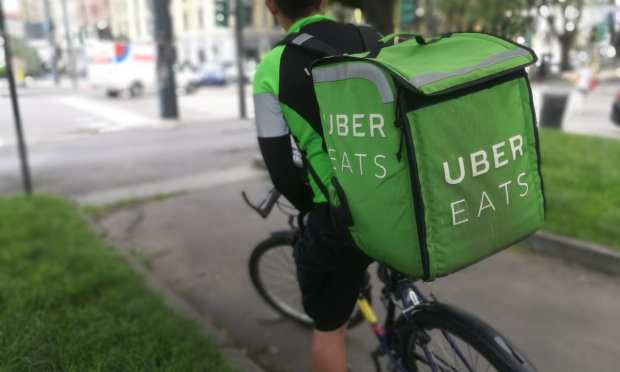Uber Eats Devours Ride-Share Business As Company Doubles Up On Groceries

The already crowded grocery delivery space is about to get even more competitive — Uber announced Monday (July 19) that it is growing its grocery delivery capabilities, with the service now available in 400 United States cities and towns, including some of the country’s largest cities. This expansion increases the Uber Eats’ grocery delivery presence more than twofold, made possible by a partnership with major grocery chain Albertsons Companies that adds 1,200 grocery stores to the platform.
The news comes shortly after Uber CEO Dara Khosrowshahi told The New York Times’ Maureen Dowd in an interview that food delivery is a $50 billion business and that it will grow to exceed the ridesharing service through which the company established itself. Plus, the service will not stop at grocery.
“When I joined, Eats was a $2.5 billion business,” Khosrowshahi told Dowd. “We’re going to be over $50 billion now. Eats on a volume basis is going to be bigger than Rides chiefly because with Eats, we’re going to go to grocery and we’re going to the pharmacy and we’re going to every single local commerce category. It’s a bigger market.”
The news comes as a handful of major food delivery services that established their following through delivering restaurant meals in the United States and abroad turn their focus to grocery delivery to increase their volume. Like Uber, DoorDash also recently announced a partnership with Albertsons Companies that threatens Instacart’s hold on grocery delivery. Meanwhile, India-based delivery service Zomato, which last week went public at over $1 billion, recently discussed its intentions to get back into grocery delivery after a brief stint during the early months of the pandemic. Similarly, Netherlands-based global delivery giant Just Eat Takeaway.com discussed with investors last week that it is gearing up to launch grocery delivery across all the markets in which it operates, all as gross profit neutral.
“We’re going to be an open network,” Just Eat Takeaway.com CEO Jitse Groen said on the call. “If a supermarket chain wants to use our vast logistical network across our global businesses, they can do that, all as gross profit neutral — it will just be an add-on to our logistical network.”
Consumers are ordering groceries to be delivered more than ever before. PYMNTS’ study, The Bring-It-To-Me Economy: How Online Marketplaces And Aggregators Drive Omnichannel Commerce, created in collaboration with Carat by Fiserv, finds that 72 percent of grocery shoppers now order their groceries online for delivery, and 27 percent are ordering more groceries online to be delivered by local stores or delivery services now than before. This number will only continue to grow — one forecast by global technology research company Technavio predicts that, over the next several years, the online grocery delivery services market will grow nearly 29 percent each year.
“This past year has been one of incredible growth for grocery delivery,” Uber Global Head of Grocery and New Verticals Raj Beri said in a statement about the new expansion. “Today nearly 3 million consumers order groceries and other essentials each month through Uber and we’re just getting started.”
